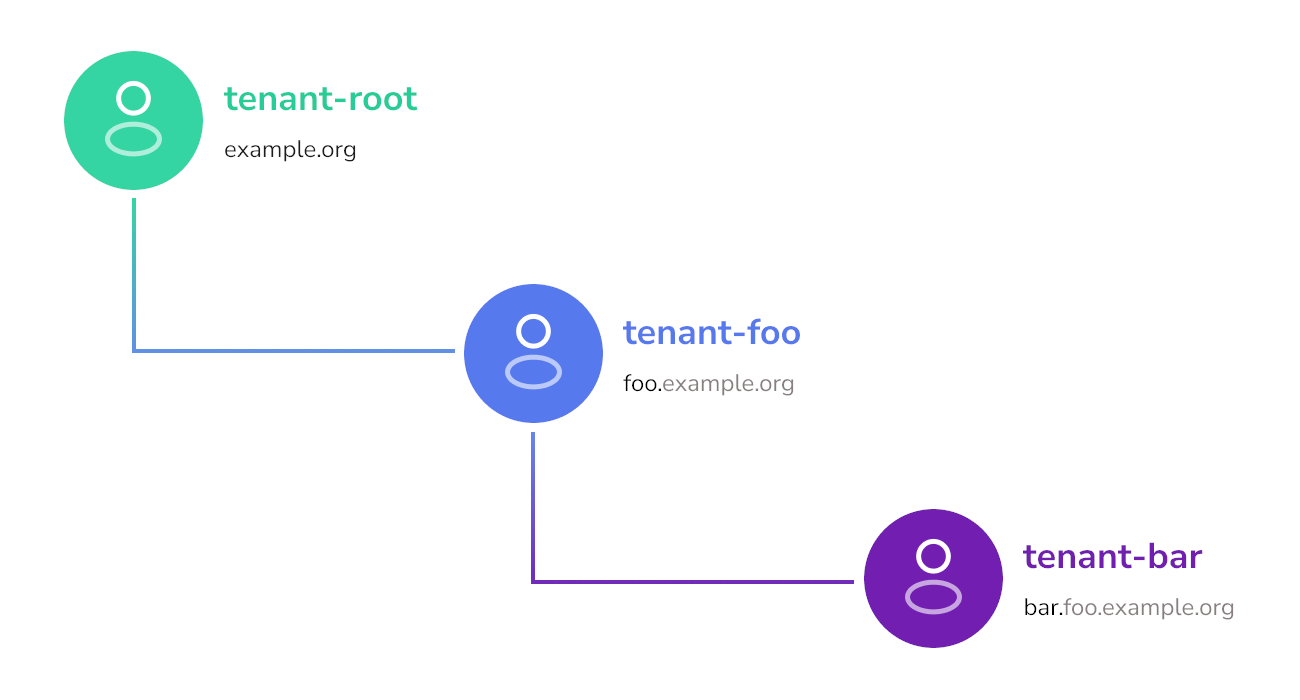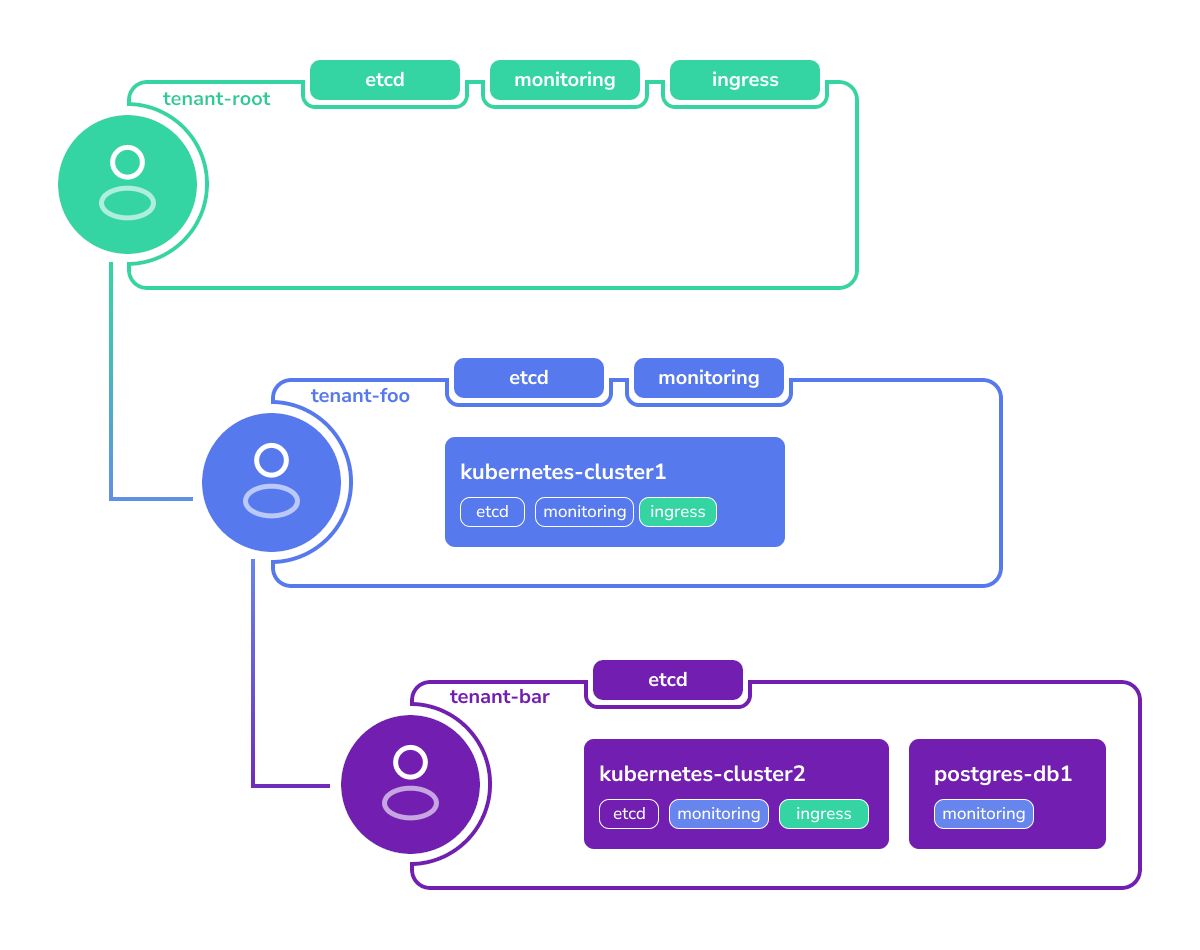Tenant System
Introduction
A tenant in Cozystack is the primary unit of isolation and security, analogous to a Kubernetes namespace but with enhanced scope. Each tenant represents an isolated environment with its own resources, networking, and RBAC (role-based access control). Some cloud providers use the term “projects” for a similar entity.
Cozystack administrators and users create tenants using the
Tenant application
from the application catalog.
Tenants can be created via the Cozystack dashboard (UI), kubectl, or directly via Cozystack API.
Tenant Nesting
All user tenants belong to the base root tenant.
This root tenant is used only to deploy user tenants and system components.
All user-side applications are deployed in their respective tenants.
Tenants can be nested further: an administrator of a tenant can create sub-tenants as applications in the Cozystack catalog. Parent tenants can share their resources with their children and oversee their applications. In turn, children can use their parent’s services.

Sharing Cluster Services
Tenants may have cluster services deployed in them. Cluster services are middleware services providing core functionality to the tenants and user-facing applications.
The root tenant has a set of services like etcd, ingress, and monitoring by default.
Lower-level tenants can run their own cluster services or access ones of their parent.
For example, a Cozystack user creates the following tenants and services:
- Tenant
fooinside of tenantroot, having its own instances ofetcdandmonitoringrunning. - Tenant
barinside of tenantfoo, having its own instance ofetcd. - Tenant Kubernetes cluster and a
Postgres database in the tenant
bar.
All applications need services like ingress and monitoring.
Since tenant bar does not have these services, the applications will use the parent tenant’s services.
Here’s how this configuration will be resolved:
- The tenant Kubernetes cluster will store its data in the
bartenant’s ownetcdservice. - All metrics will be collected in the monitoring stack of the parent tenant
foo. - Access to the applications will be through the common
ingressdeployed in the tenantroot.

Unique Domain Names
Each tenant has its own domain.
By default, (unless otherwise specified), it inherits the domain of its parent with a prefix of its name.
For example, if the root tenant has domain example.org, then tenant foo gets the domain foo.example.org by default.
However, it can be redefined to have another domain, such as example.com.
Kubernetes clusters created in this tenant namespace would get domains like: kubernetes-cluster.foo.example.org
Tenant Naming Limitations
Tenant names must be alphanumeric.
Using dashes (-) in tenant names is not allowed, unlike with other services.
This limitation exists to keep consistent naming in tenants, nested tenants, and services deployed in them.
For example:
- The root tenant is named
root, but internally it’s referenced astenant-root. - A user tenant is named
foo, which results intenant-foo. - However, a tenant cannot be named
foo-bar, because parsing names liketenant-foo-barcan be ambiguous.
Reference
See the reference for the application implementing tenant management:
tenant